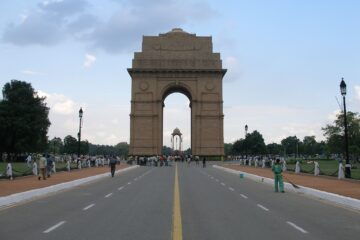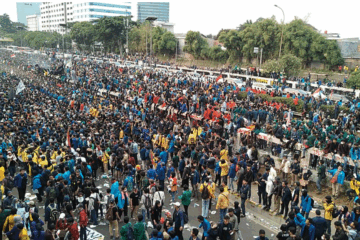Content warnings: death, gender-based violence/murder.
The Case of Sarah Everard
The recent assault and murder of London-based marketing executive Sarah Everard by Westminster Metropolitan police officer Wayne Couzens has shone a spotlight on conversations surrounding gender-based violence as well as the role police forces play in exacerbating the threat this poses to women’s safety worldwide. Besides the fact that harassment and assault is far from being an unusual occurrence for women — an already distressing reality — the brutality that has been shown by actors of the law supposedly there to ensure the population’s security further contributes to ongoing feelings of fear. As such, the role of Couzens in Everard’s killing has further opened the debate to questions regarding whether increased policing, particularly that of a male-focused nature, is an appropriate response to growing concerns about the violence faced by women, considering that it tends to be one often proposed by state institutions.
The patriarchal values that direct the narrative on women’s lives within society — those that consistently attempt, often successfully, in blaming women for their actions and appearances in instances ranging from street harassment to killings — are finally facing backlash. As feelings of resentment and outrage surface alongside the social movement that arose in the streets of London following Everard’s murder, women in England are fighting back against the local police directives to cancel the vigil they wished to hold for her. While the authorities rationalized their decision on the basis that this event would be a violation of the nation’s strict current lockdown restrictions, the overarching message this has sent to women is that ensuring their security remains their own responsibility; it forces them to stay home, as opposed to holding accountable the perpetrators of the assaults women face and making the streets safe for all. When hundreds showed up to Clapham Common anyways to pay their respects, the ensuing police presence at the time only highlighted the point women had been trying to make. Seen in a Twitter post by Parliament Member Diane Abbott, videos from the scene show women being “violently manhandled and handcuffed” by officers attempting to disperse the gathering. One of many student protesters, Maya Kocabasey, spoke with a London correspondent on an NPR Morning Edition recording; her perspective, one that seems to reflect a general sentiment amongst attendees of the event, is that police “grossly mishandled” the situation, especially because “at no point did you feel like they understood why you were there,” essentially contributing to the very reason that was behind the vigil in the first place. The event’s original organizers, a group known as Reclaim These Streets, put out a statement that encompassed their cause: to have streets “be safe for women regardless of what we wear, where we live or what time of day or night it is,” which as of today is far from being the case. Everard’s situation struck a particular chord in this sense, as she had done everything “right” per what society has conditioned women to believe they should do to stay safe. Everard had called someone on her way home, worn “really bright clothing, walked on a main road, [and] was outside before 12am” — and yet she still ended up kidnapped and murdered miles from her home. Needless to say, women should not have to be the ones taking preventative measures to avoid being blamed for their fate in a violent altercation with men, especially when it ultimately does nothing to ensure our safety, and there are far more factors at play than those we can control.

Image taken by Tim Dennell. Licensed under CC BY-NC 2.0.
Police Forces Engendering Violence Against Women and Other Marginalized Groups
A recent UK study found that 71 percent of women within the nation have faced sexual harassment in a public space, a number so large that it proves this is a structural issue within society. Underlying discriminatory practices, often founded in sexist beliefs, undoubtedly contribute to the atmosphere of fear and wariness felt by women, which in turn leads to the legitimization of violence against women and girls. The World Health Organization (WHO) recently published a report highlighting this exact violation of women’s human rights, considered one of the world’s most prevalent issues and a “major public health problem” due to its widespread impact. The report detailed how 35.6 percent of women worldwide have “experienced either intimate partner violence and/or non-partner sexual violence,” with 42 percent having injuries as a result. While already numbers are higher than they should have ever been, one of the major gaps in collecting data remains that various regions are only able to report only a minute percentage of what is likely a much higher reality, often due to cultural and societal notions that such topics should not be discussed publicly. A 2005 report by the WHO surveyed households in ten countries to determine, in part, the strategies used by women following occurrences of sexual abuse. It found that over half, and up to 95 percent of women, never reported or endeavoured to find official help. The lack of aid available as well as the stigmatization surrounding violence against women is a significant reason for such statistics, sustaining their existence and halting the advancement of women within society.
In the rare case that sexual violence is reported, the institutionalized gender-based discrimination within law enforcement agencies (and police departments in particular) basically means that the chance of justice being attained is slim to none. Within Canada, one in five sexual assault reports are dismissed by the police with no additional investigation into their testimony, often for no legitimate reason and simply due to indifference on the officers’ part. Besides the fact that such establishments actually aid in engendering the violence already faced by many within the general population, studies have found that “police themselves are four times more likely than the average person to be domestic abusers.” This contributes to the systemic issue of officers abusing the power afforded to them by their badge; excessive force and sexual misconduct make up the two most reported crimes against policemen, a rather paradoxical statistic when considering that this is what they are supposed to defend citizens against. The corruption present in the establishment is all the more visible as, despite the prevalence of events like these, the amount of officers actually made to take responsibility is near zero, with most keeping their jobs even after allegations are made.
“In the rare case that sexual violence is reported, the institutionalized gender-based discrimination within law enforcement agencies (and police departments in particular) basically means that the chance of justice being attained is slim to none.”
The controversy surrounding policing concerns a much wider scope of the population than solely women; in fact, there is a disproportionate impact on racialized communities, with a particular focus on Black residents. The racial bias seen in instances of police brutality is a systemic issue, one which rose to the forefront of public debate and prompted worldwide protests in June 2020 following the murder of George Floyd. Nonetheless, despite the recent outpour of support and demands for change within law enforcement agencies, racialized policing and police violence has been a recurrent problem for decades. This presents an even more troubling reality for women who belong to such marginalized communities, further highlighting the inadequacy of simply proposing increased policing as a solution to gender-based violence. The focus on police brutality in the United States following unjustified killings in recent years showcases the drastic structural inequalities that make policing a dangerous reality for many.
Alternative Solutions to Traditional Police Forces
The violence that characterizes so many police institutions worldwide thus makes it questionable that policing is often proposed as a solution to violence. As such, alternative solutions are increasingly being proposed by the public as communities fight for a reformation of the police system, with various ideas taking inspiration from successful public safety programs within other nations. Policing institutions in the United Kingdom, for one, are organized in a rather different manner to that of America’s, in that only a select percentage of their force is allowed to carry and use deadly weapons. The front line responders within their law enforcement organizations, carrying solely protective vests and radios, are known as community support officers; their role is to essentially defuse minor situations in a non confrontational manner, so as to avoid violence in situations that definitely did not require it. Considering the number of altercations resulting in violence between police officers and civilians that have occurred following traffic stops and accidents, assigning specialized non-armed traffic patrol workers to deal with these would drastically reduce the possibility of deadly force being used against citizens who commit minor (and often no) transgressions. Another proposed solution, which would follow in the United Kingdom’s footsteps, would be to form a group of “community mediators” or safety officers, whose primary objectives would be to reduce tensions in low-level disputes between civilians or even in domestic households. Following this, the presence of police forces today in situations involving homeless or mentally ill peoples — which often ends disastrously considering most are not prepared to effectively manage public health issues — could also be turned over to social workers trained as part of law enforcement, who would handle such a situation without escalating into violence.
Nonetheless, while these solutions to alternative law enforcement techniques would involve much less traditional policing, they remain ones that demand overall systemic change from within the very corrupted institutions concerned and will likely take longer to implement. Sarah Everard’s assault and murder by a police officer in the UK demonstrates that just because British police are not often armed in the same way US police are, it does not mean they cannot be dangerous. As such, smaller steps forward for now, like ones that could reduce the additional threat posed by largely male-focused police forces by creating more gender-neutral agencies, would be useful in working towards the long-term aim of slowly abolishing police forces that discriminate against marginalized groups. As of 2019, women in police workforces within Canada make up solely 22 percent of overall hires, a number sitting even lower in the neighboring United States, at 12.8 percent. The male-dominated field would highly benefit from a growing number of women in policing, as various studies have demonstrated that they are much less likely to utilize unnecessary force, more effective at communicating issues and diffusing possible resulting tensions, as well as more appropriately suited to address cases of gender-based violence. Regarding the last point in particular, providing victims of sexual harassment or assault the opportunity to talk to a woman, who undoubtedly understands their experience better than the majority of men, would be an infinitely positive development in their recovery. Ironically enough, the lack of women in law enforcement and male-perpetrated violence against women are rooted in the same fundamental desire: to maintain traditional gender roles so as to preserve feelings of male entitlement and dominance in society. A significant percentage of men continue to believe in their superiority, especially in such a field, which plays a definitively influential role in “hegemonic masculinity” being upheld amongst police forces. Nonetheless, having more women in policing remains a definite option for improving future law enforcement establishments; otherwise, alternative solutions proposed by activists fighting against police brutality all aim to defund such agencies. Many believe that the money invested into police forces would be much better served in outreach and engagement programs or invested into community education; dismantling patriarchal values at their roots would reduce gender inequalities and, in turn, the systemic violence against women.
Cover image by Tim Dennell. Licensed under CC BY-NC 2.0.




